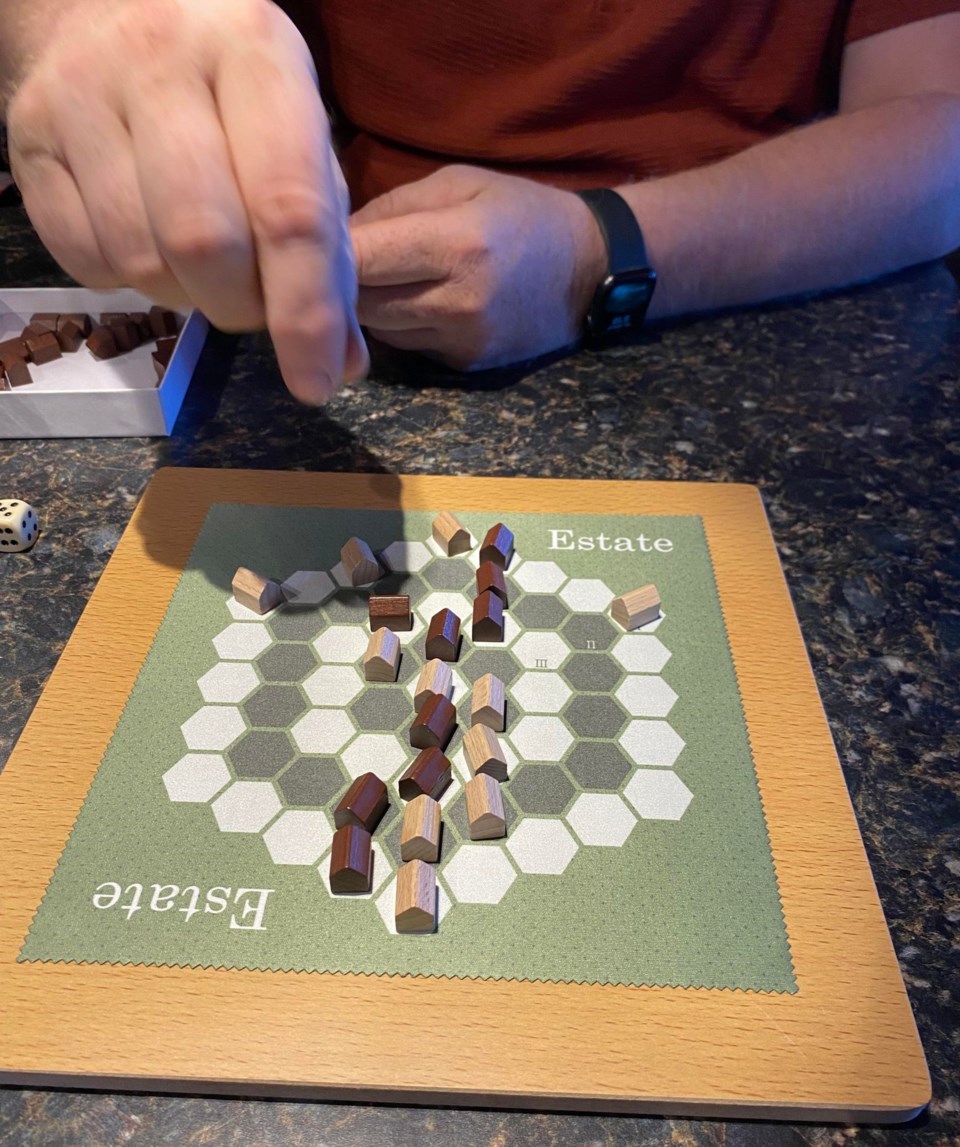YORKTON - As has been noted in past reviews designer Kanare Kato is among the more prolific creators of abstract strategy games, in his case publishing them in neat little boxes that make them ideal to take with you almost anywhere.
This week The Meeple Guild looks at Estate.
This is an interesting one in the sense it has its own unique cloth board – cloth boards being a feature of Kanare_Abstract the name of Kato’s publishing effort – but also uses pieces identical to another game he has produced called Comune which we have yet to review.
The common pieces are nice wooden ‘houses’ so aesthetically this one is nice, although as is the case with Kato’s generally small ‘footprint’ games, the board can become crowded for big fingers placing pieces. At least with Estate, once a piece is placed, it does not move.
So what is the goal of Estate?
Well, Estate is a connection game using a hexagonal board – a player needs to connect two opposite sides with an uninterrupted line of their pieces.
Now to be transparent most connection games bore this writer. Hex, which is the ‘granddaddy’ of connection games while loved by many, is almost on this writer’s ‘never play’ list.
A few connection games rise above the boring Punct for one and Tak one of the best abstract strategy games of the millennium being two.
Estate would like to rise above the norm too, and it does try.
To begin, the board is divided into five concentric areas, each with a different value.
Each player has five ‘points’ to allocate each turn. The outer ring costs one point to place a piece, and it goes up as you move inward, the centre spot costing five points. So in game terms you might lay five pieces on the outer ring, or a combination up to the five points.
The varied ‘costs’ to play a piece is a neat mechanic to try to balance things and create some tough decisions.
The issue is the ‘corner’ spots on the outer ring can be used to connect to the two adjoining sides, and are therefore highly coveted and players are going to take control of those first. Those spots are hugely under-valued at a cost of one point.
Try house ruling that the corner spots are either blocked out and not part of board at all, or cost four or five points. It will change the game, but in a good way.
As a connection game, playing the rules as written, Estate is just OK. Experiment a bit and you might push the game a bit higher in terms of game play.






